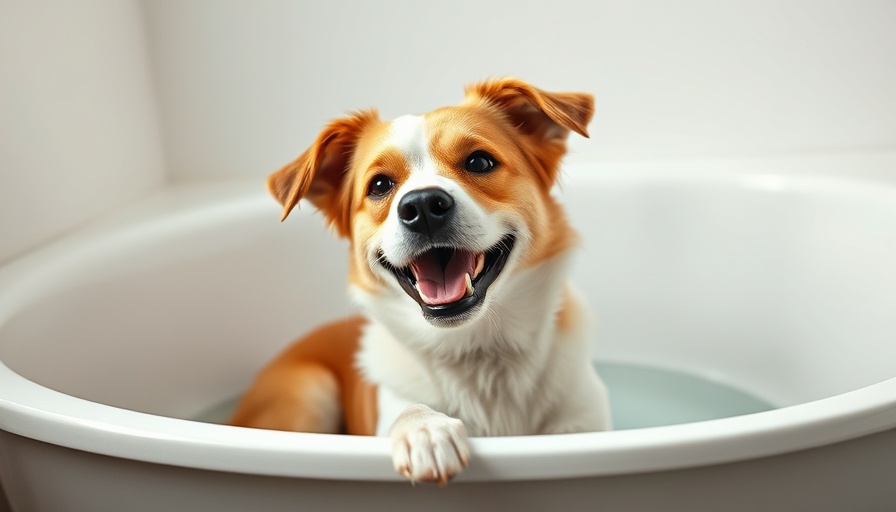
Why Bath Time Matters for Your Dog's Health
Bathing your dog isn't just about keeping them clean; it's crucial for their overall health. Regular baths help remove dirt, allergens, and parasites that can lead to skin issues or health problems. Keeping your dog's coat clean also promotes a healthy skin barrier, which can be vital for dogs with sensitive skin.
Create the Perfect Bathing Atmosphere
Your dog's bathing experience begins long before the water runs. To ensure a stress-free bath, setting up the right environment is essential. This means choosing a location that your dog feels comfortable in—whether it's the laundry room, bathtub, or even outside on a warm day. Once you've selected the spot, ensure it's safe with non-slip mats to prevent any accidents.
Gather Necessary Supplies for a Seamless Experience
Preparation is key! Before you begin, gather all your supplies within easy reach. You'll need dog-specific shampoo, plenty of towels, a brush, and perhaps calming aids to reduce anxiety. Having everything at your fingertips minimizes the chance of leaving your pup unattended and helps to keep the process smooth.
Exert Your Dog's Energy with Play
Perhaps one of the most effective ways to ensure a calm bath time is to let your dog get some exercise beforehand. Going for a brisk walk or engaging in a game of fetch helps expend energy and makes your dog more compliant and relaxed during their bath. Just be sure not to overdo it—aim for a happy medium.
Pre-Bath Grooming: A Step You Shouldn’t Skip
Brushing your dog before the bath is not only beneficial for their coat but is a crucial step that should not be overlooked. This helps to remove tangles and mats, reducing shedding and preparing the fur to absorb shampoo effectively. It also distributes the natural oils in their coat, promoting a healthy appearance.
Set the Mood for a Calming Experience
Creating a soothing ambiance can work wonders in reducing your dog's anxiety. Consider playing gently soothing music or incorporating calming scents, such as lavender. Softly spoken tones from you can reassure your pet, making them feel more at ease. These little touches can make bath time a positive experience rather than a dreaded chore.
Make Bathing Fun: Techniques to Try
Transform bath time into a bonding experience! Using treats is a great way to reward your dog for positive behavior during the bath. You might also try bringing some of their favorite toys into the bathing area to distract them and make the experience feel less clinical.
Post-Bath Love and Attention
After washing, it’s vital to celebrate your dog’s bravery and cooperation. Take the time to dry them off thoroughly and perhaps offer a little extra cuddling session or play-time as a reward. This not only strengthens your bond but also reinforces the idea that bath time can be fun.
Overall Benefits of a Stress-Free Bath Time
A well-conducted bath not only keeps your dog clean but fosters a healthier bond between you and your most loyal companion. By transforming this task into a fun, gentle, and relaxed experience, you're ensuring your dog feels loved and secure.
In conclusion, a stress-free bath for your dog is within reach with these simple strategies! Remember, bathing shouldn’t just be a chore; it can be a delightful opportunity for connection. For more grooming tips and advice, don’t hesitate to explore our resources!
 Add Row
Add Row  Add
Add 




Write A Comment